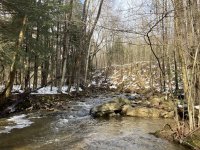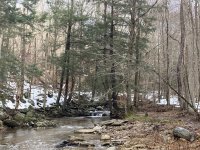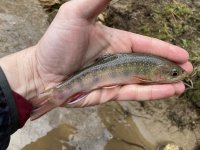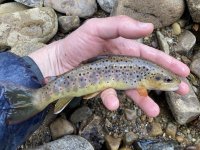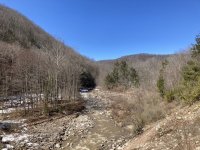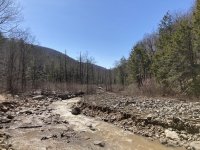Swattie87
Well-known member
- Joined
- May 3, 2011
- Messages
- 5,770
I made two trips up this Winter to explore some tributaries in these watersheds for wild Trout...And to stop for Old Forge pizza on the way home. I found a nice one with both Brookies and Browns in the Bowmans watershed, but largely struck out (one Brookie) in the Mehoopany watershed.
Question...Both trips flows were relatively high, but nothing blown out or anything, yet both Bowmans and Mehoopany main stems were completely Ovaltine chocolate milk. I would have expected them off color probably, but not a muddy mess. There’s clear evidence still of the flood damage on them, but how long does it take for them to clear after a rain/snowmelt event? Do they ever run clear? Or is there THAT much sediment still being processed from the floods? Were they like this before the floods?
Bowmans did start to clear some as you went upstream I noticed, but Mehoopany didn’t, at least as far up as the furthest trib we tried to fish...which was also chocolate milk. I hardly ever see small tribs like that chocolate milk, but there were huge sediment bars and hillsides eroding into the stream still.
Question...Both trips flows were relatively high, but nothing blown out or anything, yet both Bowmans and Mehoopany main stems were completely Ovaltine chocolate milk. I would have expected them off color probably, but not a muddy mess. There’s clear evidence still of the flood damage on them, but how long does it take for them to clear after a rain/snowmelt event? Do they ever run clear? Or is there THAT much sediment still being processed from the floods? Were they like this before the floods?
Bowmans did start to clear some as you went upstream I noticed, but Mehoopany didn’t, at least as far up as the furthest trib we tried to fish...which was also chocolate milk. I hardly ever see small tribs like that chocolate milk, but there were huge sediment bars and hillsides eroding into the stream still.

